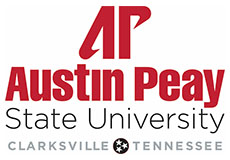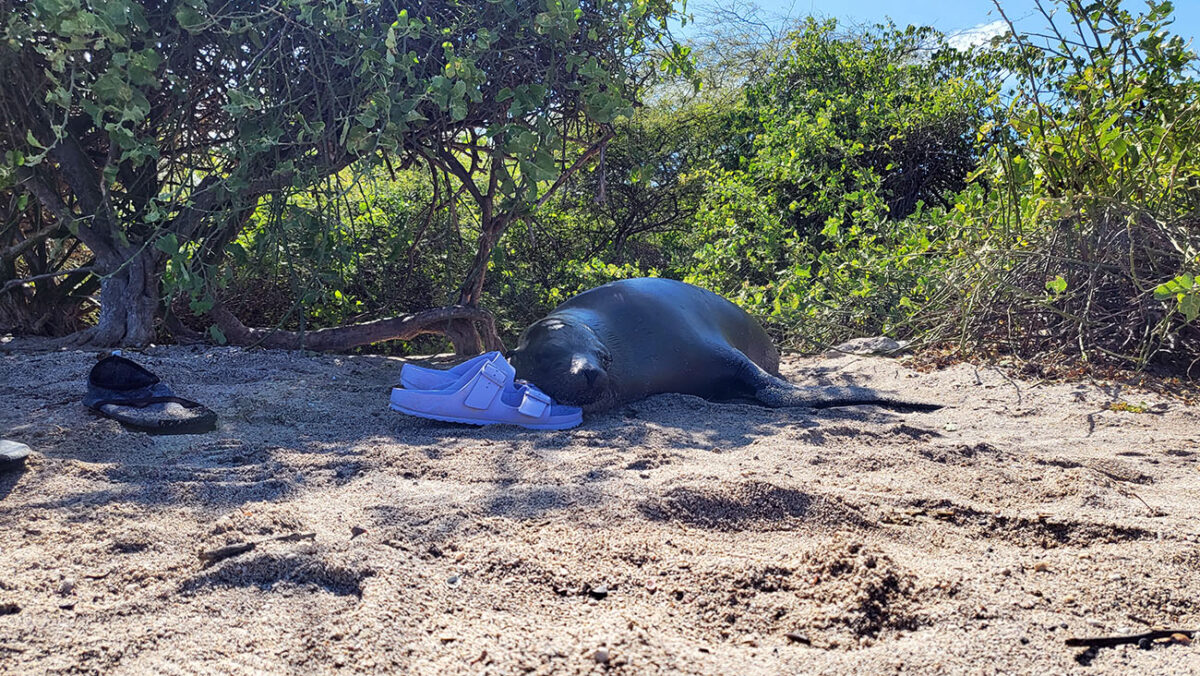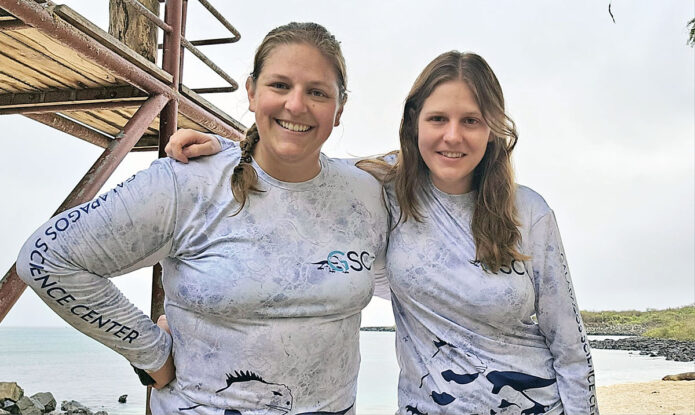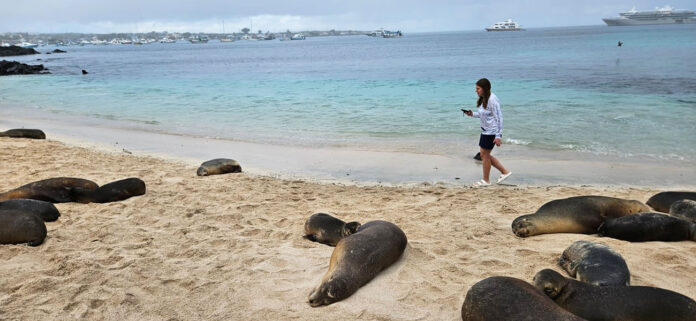 Clarksville, TN – When Dr. Madeline Giefer first set foot on the beaches of the Galapagos Islands, she didn’t expect to find herself in a standoff with a 300-pound sea lion over a patch of shade.
Clarksville, TN – When Dr. Madeline Giefer first set foot on the beaches of the Galapagos Islands, she didn’t expect to find herself in a standoff with a 300-pound sea lion over a patch of shade.
But we’re getting a little ahead of ourselves here.
Giefer, who began her career studying environmental issues in China and is now an assistant professor in the Austin Peay State University (APSU) Earth and Environmental Sciences Department, first pivoted to sea lion research in the Galapagos due to political complications.
“I was invited by one of my grad school mentors to come to the Galapagos and just try to reestablish a research agenda there,” Giefer said.
Little did she know this invitation would lead her into a fascinating world of animal behavior, human-wildlife conflict, and the unexpected challenges of researching in one of the world’s most unique ecosystems.
One of the most surprising aspects of Giefer’s research is the setting. Many people picture the Galapagos as an uninhabited wilderness, but the reality is quite different.
“What a lot of people don’t realize about the Galapagos is it’s a province of Ecuador with people,” Giefer said. “It’s got about 35,000 people who live in towns or have farms, and then there are about a quarter million tourists a year.”
This human presence creates a unique dynamic with the local wildlife, particularly the sea lions. In the town where Giefer conducts much of her research, sea lions can be found lounging on beaches right alongside sunbathing tourists. This proximity allows for fascinating observations but raises concerns about human-wildlife conflict.

“There’s already evidence that sea lions are splitting themselves off into groups based on personality,” she said. “There’s already research showing that sea lions who are less afraid of people are more prevalent on crowded beaches, and sea lions who are less tolerant are moving away.”
This summer’s eye-opening encounter happened with a female sea lion determined to claim Giefer’s shady spot.
“I got one of the very last shady spots in the brush of this area,” she said. “And there was a female, about 300 pounds, who saw that I had a spot in the shade. She wanted that spot. She thought, ‘I’m bigger than she is, and I can have that spot.’ And she was right.”
This incident sparked Giefer’s realization that shade is a critical resource for these animals. That became the foundation of her research on how sea lions manage their body temperature in the intense equatorial sun, and how human presence might affect their behavior and communication.
On her most recent trip, Giefer spent a lot of time observing; new permitting rules in the Galapagos restricted her and coworker Dr. Katie Haase’s ability to interact more closely with the animals. Until recently, it wasn’t even legal to conduct most forms of research with sea lions in the Galapagos, making planning a research outing tricky from half a world away.
Giefer’s research has revealed fascinating adaptations sea lions use to cope with heat.

“They powder themselves like sugar cookies with sand to reflect more light,” she said, noting that it helps them regulate their body temperature. “Sea lions are blubbery animals that are kind of meant for the Arctic. It’s just a weird twist of fate that they ended up in the Galapagos about 9 million years ago. And evolution hasn’t fixed all of the glitches for them yet.”
Another key aspect of Giefer’s research focuses on how human-generated noise might affect sea lion communication. Sea lions use vocalizations for everything from mother-pup recognition to male territorial displays. In the bustling town environment, with its construction noise and tourist activity, Giefer wonders if these crucial communications are being disrupted.
“There’s a lot of noise pollution in Galapagos from people and construction and motorcycles,” she said. “Does that interfere with mother-pup recognition? When people are present, are they more aggressive? We want to set up some audio recording to help measure that and bring a drone to get more extensive data to map how they spread together versus spread out.”
Giefer and Haase plan to return to the Galapagos in 2026 with more advanced equipment, including drones. They hope to gather more detailed data on sea lions’ heat loss management and the impact of human presence on their behavior, while helping locals and other biologists understand the species’ unique social structures.
“We noticed that the group that needed more space away from the people, which [was] being left alone, they were fighting each other more and were more stressed out,” Giefer said. “The ones who were more among people just fell asleep. That has implications for their social function and their vocalizations.”
As tourism in the Galapagos grows, this research could prove crucial in managing the delicate balance between human activity and wildlife conservation. Understanding how sea lions adapt to climate and human presence can help develop conservation strategies to ensure these unique animals thrive in their equatorial home.
About the Austin Peay State University College of STEM
The Austin Peay State University College of Science, Technology, Engineering & Mathematics (STEM) provides studies for students in the areas of agriculture, astronomy, aviation sciences, biology, chemistry, computer science, earth and environmental sciences, engineering physics, engineering technology, information technology, mathematics, medical laboratory sciences, radiologic sciences, and physics.
Our outstanding, discipline-based programs are student-centered and designed to prepare students for responsible positions at all levels of research, industry, education, medicine, and government positions.



